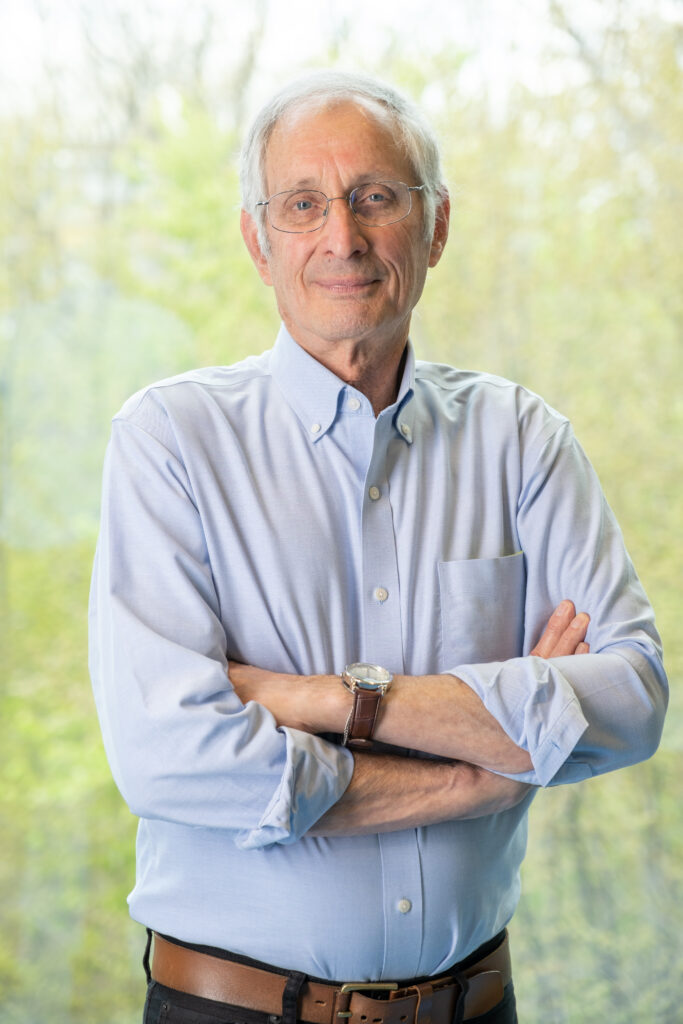Schwartz Honored as 2023 Edison Patent Awardee
Jeffrey Schwartz, Professor Emeritus in the Department of Chemistry, has been named an Edison Patent Awardee, the state’s highest recognition for inventors and innovators, by the Research and Development Council of New Jersey.
Schwartz is being honored for his 2014 patent, “Devices with Multiple Surface Functionality,” in the Biomaterials category. He is one of a class of 60 inventors and three career honorees to be feted at an R&D Council awards ceremony in November.
The 2023 awards cohort was announced this week.

Jeffrey Schwartz, Professor Emeritus in the Department of Chemistry.
Schwartz’s invention is an organophosphonate “monolayer” that has advanced the field of interface chemistry as applied to medical implants. It aims to create the means through which such devices—for example, knee and hip implants—can better integrate with the human body. Schwartz’s phosphonates are a class of stable, string-like molecules that bond strongly to substrate-surface oxides.
Derivatives of Schwartz’s base-invention monolayer have most recently become the focus of neurobiologists who are researching phosphonate monolayer-modified hydrogel conduits for nerve regeneration, ultimately targeting patients with spinal cord injuries.
Edison Patent honorees are selected by a team of R&D Council researchers who evaluate patents for applicability and socio-economic value, novelty, and commercial impact. At least part of the technical or scientific work for all winning patents must be completed in New Jersey.
“The Edison Patent Awards honor the brilliant minds and visionary companies propelling New Jersey to the forefront of global innovation,” said Colleen Ruegger, chair of the R&D Council Board of Directors. “Within the Garden State, Thomas Edison’s profound legacy continues to thrive, embodied by the 60 remarkable honorees who remind us that ‘Innovation Lives Here’ in New Jersey.”
Schwartz describes his invention and its expanding applications over the years as a kind of “layer cake” technology, a biomedical platform that evolves with the demands of an implant surface.
“As substrate surfaces become less reactive for direct phosphonate attachment, you have to build layers of designed reactivity on them, like creating a Dobos torte, the famous Hungarian layered pastry,” said Schwartz. “In many cases there’s the surface of the device, then a designed interface, and finally the phosphonate monolayer, to which the cells attach.”
Innovation in New Jersey
In order to be eligible for an Edison Patent Award, an invention had to give rise to a Garden State business that employs New Jerseyans. In the case of the Schwartz patent—U.S. Patent 8,993,117 B2—that is the Orthobond Corporation in Monmouth Junction, which develops anti-infective materials for use with the monolayer interface.
Indeed, the original technology came out of a conversation decades ago between Schwartz and Orthobond co-founder Gregory Lutz, who first suggested that Schwartz try to figure out how to better integrate tissue development with synthetics like titanium.
Schwartz explained that this initially involved learning how to “attack” the native oxide of an otherwise recalcitrant material. Researching some of the literature in the field, Schwartz found that phosphoric acid was known to vigorously attack and even dissolve titanium, a fact that led him to test whether analogous phosphonic acids could be harnessed to controllably bond to titanium, rather than dissolve it.
A former graduate student, Ellen Gawalt *01, set out to see if she could make a phosphonate monolayer on titanium. “She just started to explore,” Schwartz said, “and developed a simple spray of tiny drops of dissolved phosphonic acids that could be applied directly onto the titanium.
“At first the phosphonic acids would just rinse off. So we heated it a little bit and then phosphonate products stuck. We found that Ellen had made an almost perfect monolayer. This had never been done before.”
Later, Michael Avaltroni *03, another former Schwartz lab grad student, prepared an hydroxyl group-terminated phosphonic acid and showed that it could be made cell-adhesive.
Over the years, 10 Princeton Chemistry graduate and 10 undergraduate students have worked on the technology to improve, refine, and extend its application. The project has also benefited greatly through Schwartz’s long collaboration with Jean Schwarzbauer, the Eugene Higgins Professor of Molecular Biology and a leading expert on extracellular matrix structure and function.
“Without Jean’s critical input, our chemical interfaces would never have evolved to become biomedical ones. Jean and I have collaborated on this project for over 20 years,” said Schwartz. “We just kept on developing better and better types of surfaces.”
Schwartz joined Princeton Chemistry as an Assistant Professor in 1970. He transferred to emeritus status last year after 52 years on the faculty.
Last year’s Edison Patent winners included, among others, David MacMillan, the James S. McDonnell Distinguished University Professor in Chemistry and co-recipient of the 2021 Nobel Prize in chemistry.
The 44th annual Edison Patent Awards Ceremony will take place on Wednesday, November 15 at the Liberty Science Center in Jersey City.
Read the R&D Council’s full press release here.
